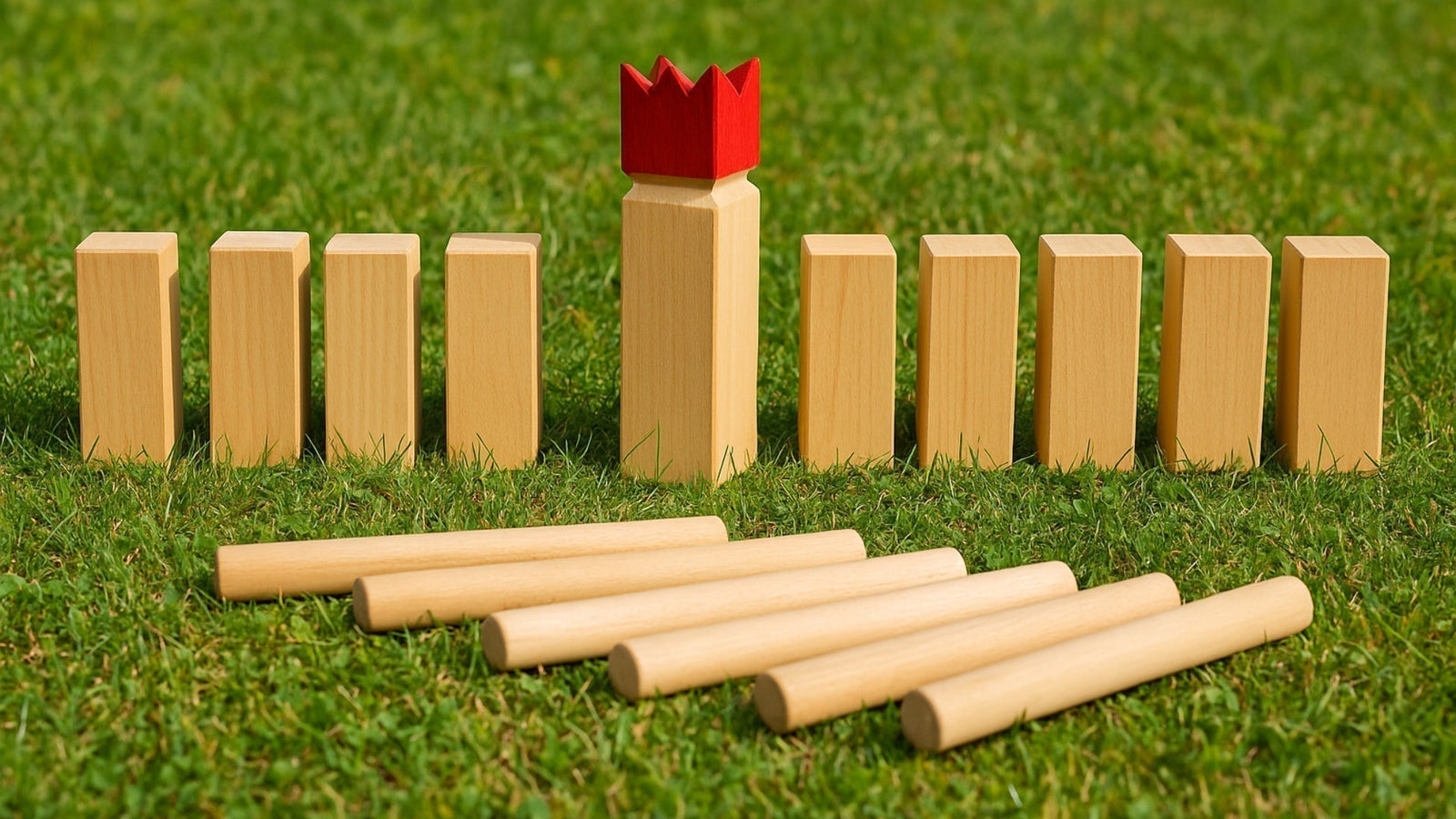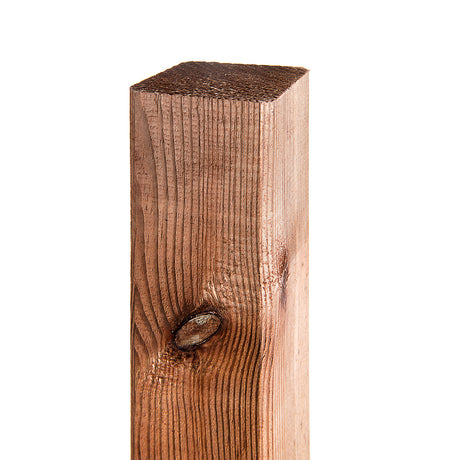Viking chess – also known as Kubb – has been delighting young and old for years. The principle is simple, the fun factor high: Two teams compete against each other and try to knock over wooden blocks with throwing sticks – at the end, the king should fall.
The best part? You can easily build your own Viking chess set yourself. With a little time, simple tools, and the sturdy HaGa® wooden posts, you'll have a unique game set that you can take anywhere—whether it's to the garden, the park, or the lake.
Material list – what you need for your DIY Viking chess
You don't need much to build a complete Viking chess set . Most of the components can be easily sawn and customized as desired:
1. The King
- Dimensions: approx. 30 cm high
- Material: preferably a wooden post with 7×7 cm – stable and clearly visible
- Tip: If you want, you can give the king a decorative “crown” – it’s easy to do with a few extra cuts.
2. 10 Kubbs (the game blocks)
- Dimensions: approx. 15 cm high each
- Material: also made from 7×7 cm wooden posts – from this you can cut several Kubbs
3. 6 throwing sticks
- Dimensions: approx. 30 cm long, 4–5 cm diameter
- Material: smooth round rods or simple wooden broom handles
- Tip: light sanding provides better grip when throwing
4. 4–6 marker sticks
- Dimensions: about 1 meter long, optionally sharpened
- Purpose: to mark the playing area (recommended: 5 × 8 meters)
- Material: thin wooden sticks, posts or bamboo
Optional accessories:
- sandpaper
- weatherproof wood stain
- Colors or pyrography pens for design
- Hand saw or miter saw, possibly drill
How to build your own Viking chess set – step by step
1. Cutting
Saw the components to the required lengths:
- 1 King: 30 cm
- 10 Kubbs: 15 cm each
- Throwing sticks : approx. 30 cm each
- Marking sticks: approx. 1 m (with pointed end if necessary)
2. Prepare throwing sticks
- Cut round rods or broom handles to 30 cm each
- For comfortable handling, we recommend sanding the edges
3. Sanding & Designing
- smooth all cut edges to avoid splinters
- Now it's time to get creative: Paint or engrave your game pieces – each one becomes unique
4. Apply wood preservative
- For permanent outdoor use, we recommend a weatherproof glaze
- Alternatively, you can leave the wood natural – just as you like
Why build Viking chess yourself?
Building your own Viking chess set has many advantages – and is fun even during the process. You're committed to sustainability by using durable materials like wood and, incidentally, avoiding packaging waste. This is not only environmentally friendly but also a great DIY project for the whole family.
Additionally, your own design creates a truly personalized playset : Whether painted, engraved, or simply kept simple, each figure is unique. Those who enjoy creative work can let their imagination run wild here. Wooden posts provide the perfect foundation for this – they are weatherproof, sturdy, and ideal for outdoor use.
Another advantage: A self-built set is often significantly cheaper than a store-bought one, without sacrificing quality. Quite the opposite – you decide how sturdy and high-quality your game should be. And the best part: You don't need any special tools to build it. With a simple saw, sandpaper, and a little time, you can create a sturdy game for many occasions in no time.
In short: building it yourself is worth it – for the environment, your wallet and the fun of playing.
Viking Chess Rules
The rules of Viking Chess (Kubb) are easy to learn and quickly explained—perfect for spontaneous games with family or friends. The game is played outdoors on a rectangular area approximately 5 x 8 meters. Two teams of 1-6 players compete, attempting to first knock over the opposing Kubbs (wooden blocks) and finally the king in the center of the board.
At the beginning, both teams set up their Kubbs at their respective baselines. To decide who goes first, one player from each team takes turns, and both players simultaneously try to throw a throwing stick as close to the king as possible without hitting him. The closest team starts the game.
The teams take turns throwing their throwing sticks at the opposing team's Kubbs. If a Kubb is hit, the opposing team places it on the thrower's half of the playing field for the next round. The so-called "field kubb game" begins, and the team must first knock over the field kubbs before they can throw at the other team's Kubbs. This tactical component is what makes the game so appealing: Those who throw well and place their kubbs wisely give their team the advantage.
The game ends when a team knocks over all of the opposing Kubbs and finally hits the king in the center . Important: The king may only be thrown when no opposing Kubbs remain standing— if the king falls earlier, the team immediately loses.
Viking Chess for Beginners Video

Conclusion: Play, fun and creativity in your own set
Building your own Viking chess set is not only fun, but also brings a touch of craftsmanship, a connection to nature, and creativity to your leisure time. With a homemade set, you've created not just a game, but a truly unique piece. So – grab the saw and head outside. Your first match awaits!
Frequently asked question: Viking chess
Is Kubb the same as Viking chess?
Yes, Kubb and Viking chess are two names for the same game .
Kubb is the original name from Sweden, where the game originated. The term Viking chess has become popular, especially in German-speaking countries—presumably because the game is often associated with Nordic culture and the rustic outdoor style of play.


